Craving to know what the most exquisite delicacy tastes like? You are in the right place.
Foie Gras has a unique, luxurious taste that is unlike anything you’ve ever experienced.
Here you will find all the facts and information you need to understand this indulgent dish.
What is Foie Gras?

Foie gras is a controversial French delicacy made from the liver of a duck or goose that has been specially fattened by force-feeding.
While it is often considered a luxury food, many animal rights activists and organizations have criticized the production of foie gras for its inhumane treatment of the birds.
While this article won’t talk about the flavor profile of foie gras, it’s important to understand the production methods used to create this delicacy.
Force-feeding ducks and geese to fatten their livers can cause injury, disease, and discomfort, leading to ethical concerns about the treatment of animals used in foie gras production.
Furthermore, the high-fat content of foie gras can contribute to a variety of health risks in humans, including heart disease and high cholesterol.
Many countries have banned the production and sale of foie gras, including several states in the US.
However, it remains a popular and controversial delicacy in French cuisine, often served in high-end restaurants.
Pro tip: Consider ethical and health concerns before consuming foie gras or adding it to your menu.
There are plenty of delicious and sustainable alternatives to this controversial dish that won’t involve animal cruelty.
What Does Foie Gras Taste Like?
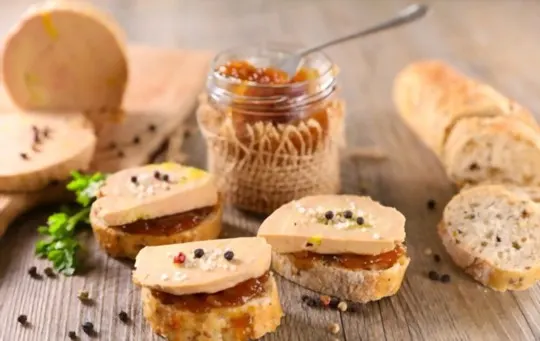
Foie gras, a French delicacy made from the liver of a fattened duck or goose, has a rich, buttery, and savory flavor with a delicate texture that melts in your mouth.
Here are some of the taste notes that you can expect from this luxurious dish:
The taste of foie gras can be described as nutty, earthy, and slightly sweet.
It has a mild liver flavor that is not as strong as other liver-based dishes.
The texture of foie gras can vary, but it is typically smooth and velvety, with a creamy mouthfeel.
Foie gras can be served in many ways, including seared, pan-fried, or as a pâté, enhancing its flavor and texture.
Despite its sometimes-controversial production process, foie gras is a popular and well-loved luxury food item among culinary enthusiasts.
Texture and Appearance of Foie Gras
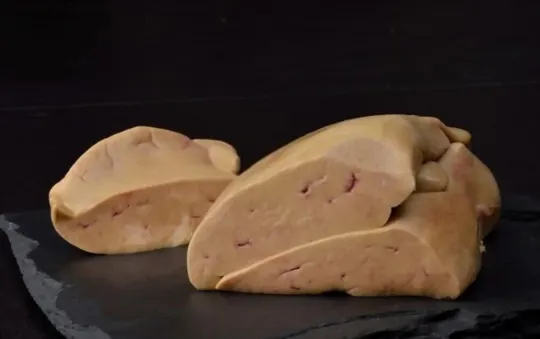
Foie gras is known for its unique texture and appearance that sets it apart from other types of meat.
The texture of foie gras is velvety and smooth, with a melt-in-your-mouth quality that is difficult to replicate with any other food.
Foie gras has a rich and buttery flavor that is often described as delicate, earthy, and slightly sweet.
It has a melt-in-your-mouth texture that is unlike any other food.
Foie gras can be served chilled, pan-seared, or roasted, and it pairs well with sweet and savory flavors such as figs, cherries, and balsamic vinegar.
The appearance of foie gras is also unique, with a deep reddish-brown color and a firm, compact texture.
Foie gras can be served whole or sliced into thin pieces, and it is often paired with bread, crackers, or other types of crunchy or crispy accompaniments.
While some people find the taste and texture of foie gras to be too rich or heavy, others consider it to be a delicacy worth savoring.
If you are interested in trying foie gras, it is best to start with a small serving size until you become accustomed to its flavor and texture.
How Foie Gras is Prepared and Served?

Foie gras is prepared by force-feeding ducks or geese to fatten their livers, resulting in a rich and buttery flavor that many find delicious.
However, the process of producing foie gras is controversial due to animal welfare concerns.
Here’s how foie gras is prepared and served:
- Ducks or geese are force-fed using a feeding tube, a process also known as gavage. The birds are usually kept in small cages or pens to restrict their movement.
- The liver is harvested once it’s reached a certain size, usually after 12-21 days of force-feeding.
- Foie gras can be served in various ways such as pan-seared, torchon, and pâte.
- It’s often paired with sweet accompaniments such as fruit compote or port wine reduction to offset its rich flavor.
That being said, some people find the production process of foie gras unethical and refuse to consume it.
It’s important to educate oneself about the source of the foie gras before trying it.
Pro Tip: If you’re unsure about eating foie gras or want to try a more ethical alternative, look for plant-based foie gras made from ingredients such as lentils, mushrooms, and walnuts.
1 – Terrine
Before diving into what foie gras tastes like, it’s essential to understand what terrine is.
Terrine is a type of French dish that is traditionally made by cooking meat, game, or fish that has been finely ground or diced and seasoned with herbs, spices, and other flavorful ingredients.
The mixture is then placed into a terrine dish, which is a rectangular container that can be made of ceramic, glass, or even metal, and baked to perfection.
Once the terrine has cooled, it is sliced and served in individual portions.
Now that you have a better idea of what a terrine is, we can answer the question of what foie gras tastes like.
Foie gras is a popular terrine made from the liver of a fattened duck or goose, which is why it has a unique and distinct flavor.
The taste of foie gras can be described as rich, buttery, and savory, with a melt-in-your-mouth texture that is often compared to the creaminess of butter.
Additionally, foie gras can have a subtle sweetness and a slight nutty flavor, which further enhances its overall taste.
Due to its unique and luxurious flavor, foie gras is often considered a delicacy and is commonly enjoyed as a gourmet food item at high-end restaurants.
While it may not be everyone’s cup of tea, those who are fans of foie gras rave about its creamy and indulgent taste.
2 – Seared
Seared foie gras is a delicacy with a rich, buttery, and savory flavor that melts in your mouth.
It has a creamy texture and a subtle sweetness that pairs well with acidic or fruity flavors.
Foie gras is made from the liver of a duck or goose that has been purposefully fattened through force-feeding.
The liver is then seasoned with salt and herbs and seared on high heat to create a crispy crust while maintaining a soft interior.
Foie gras is best served hot and can be used in various dishes, such as salads, pastas, and burgers.
Due to its rich flavor and high-fat content, a small portion of seared foie gras is considered a luxurious addition to any meal.
Pro tip: When buying foie gras, choose a trusted supplier to ensure the highest quality and ethical sourcing practices.
What Gives Foie Gras Its Unique Flavor?
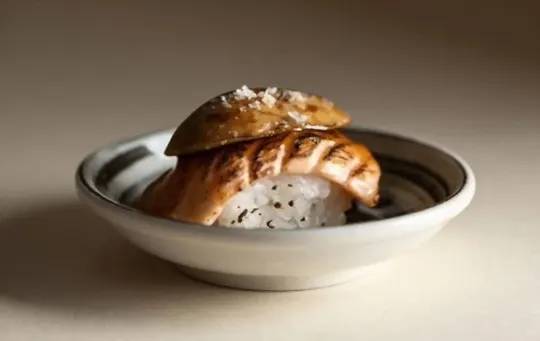
Foie gras is known for its unique and rich flavor and texture, which is derived from the preparation process and the high-fat content of the liver.
The liver of a fattened goose or duck is harvested and then processed into foie gras, which has a buttery, creamy, and savory taste with a hint of sweetness.
The texture is smooth and melts in the mouth, with a distinct richness and depth of flavor that is unlike any other food.
The unique flavor profile of foie gras is a result of several factors, including the animal’s diet, the process of force-feeding, and the precise cooking techniques used to prepare the dish.
The high level of healthy fats in the liver also contribute to the richness and smoothness of the flavor.
Foie gras is often served in gourmet restaurants, and it is considered a delicacy in many parts of the world.
The intense flavor and texture of foie gras make it a versatile ingredient in a wide range of dishes, from pâtés and terrines to decadent pastries and desserts.
Pro tip: If you are interested in trying foie gras for the first time, start by sampling it in a restaurant or food festival where it is prepared by an experienced chef.
It is important to choose a high-quality product and to savor it slowly to appreciate the unique flavor and texture.
1 – Feed of Geese or Ducks
Foie Gras is a delicacy made from the liver of geese or ducks that have been specially fattened.
The flavor of foie gras is uniquely rich and complex, with a buttery, silky texture that melts in your mouth.
The taste can be described as savory and earthy, with hints of sweetness and nuttiness.
Foie gras also has a distinct umami flavor, which is often compared to the taste of beef or veal liver.
The texture of foie gras is smooth and creamy, with a velvety mouthfeel.
Some people also describe it as slightly grainy or chalky, depending on how it is prepared.
Foie gras is a gourmet food that is often served in small portions as an appetizer or a garnish, paired with sweet or tart fruit compotes, toasted bread, or wine.
It is important to note that not everyone enjoys the taste of foie gras, as some find it too rich or overwhelming.
However, for those who appreciate the unique flavors and textures of this luxurious dish, foie gras is a true culinary delight.
2 – Fattening Process
Foie gras is a luxury food product that has been subject to much debate and controversy.
It is made by force-feeding ducks or geese, which causes their liver to become fatty and swollen.
While some people consider it a delicacy, others argue that the process is cruel and inhumane.
The taste of foie gras is unique and complex, with a rich, buttery flavor that is both savory and slightly sweet.
The texture is smooth and creamy, with a melt-in-your-mouth quality that makes it stand out from other types of meat.
Foie gras is often served as a spread or pate, or as a component of other dishes like salads or sandwiches.
While it is certainly not for everyone, many people consider foie gras to be a special treat and a culinary experience unlike any other.
However, it is important to consider both the taste and the ethical implications of consuming this controversial food.
Is Foie Gras Healthy?

Foie gras is a controversial delicacy made from the liver of a duck or goose that has been specially fattened.
While it is high in fat, it does contain some beneficial nutrients, but it should be consumed in moderation and is not considered a healthy food option.
When it comes to taste, foie gras has a rich, buttery, and delicate flavor that melts in your mouth.
It has a smooth texture that is spreadable and can be used as a luxurious ingredient or served as a standalone delicacy.
However, foie gras production has come under scrutiny for ethical reasons as force-feeding and caging the birds is considered cruel.
While it is a matter of personal opinion whether to consume foie gras or not, it is recommended to consume it in moderation due to its high-fat content.
Pro Tip: If you are looking for a healthier alternative, try replacing foie gras with plant-based and leaner sources of fat such as avocado, nuts, and seeds.
Cultural Significance of Foie Gras
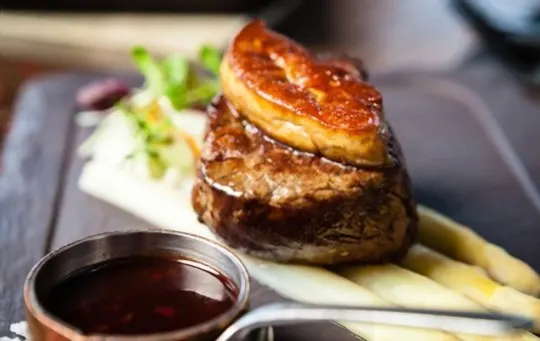
Foie gras has been a controversial delicacy for years, with its cultural significance dating back to ancient times.
Here’s a look at the cultural significance of foie gras:
- Foie gras has been a part of the culinary tradition in France for centuries, and it’s considered a staple food item in French cuisine.
- Foie gras is also an important dish in Jewish cuisine, where it’s eaten during holidays and special occasions.
- In ancient civilizations, such as Egypt and Rome, foie gras was seen as a delicacy reserved for royalty and other high-ranking officials.
- Foie gras is also associated with wealth and luxury, making it a popular item on the menus of high-end restaurants and gourmet food stores.
While some argue that foie gras is a form of animal cruelty, others consider it an important part of their cultural heritage and culinary tradition.
Nonetheless, it’s important to consider the ethical and humane treatment of animals throughout the production process.
As for its taste, foie gras is rich, buttery, and slightly sweet, with a smooth and velvety texture.
Despite its polarizing reputation, it remains a beloved delicacy for many foodies around the world.
Where to Buy Foie Gras and How to Store It?
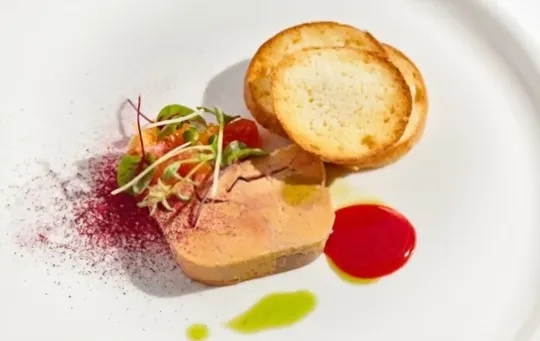
Foie gras is a luxurious delicacy that’s best purchased from specialty food stores or online retailers.
It’s important to know how to store it to make sure it maintains its texture and quality.
Here are some tips to keep in mind:
Buying:
Look for foie gras that’s been ethically produced from ducks or geese that have been treated humanely.
Check for the label “Indication Geographique Protégée (IGP)” to ensure its origin and quality.
Storage:
Store foie gras in the refrigerator between 32°F to 39°F.
Keep it wrapped in plastic wrap or parchment paper to avoid contact with air or moisture.
It’s best consumed within a week of purchase to maintain its flavor and texture.
Foie gras has a rich, buttery, and delicate flavor that melts in your mouth.
It has a silky and smooth texture that’s one of a kind.
Foie gras can be served in many ways, including pan-seared, baked, or in a terrine.
It pairs well with sweet and savory flavors, making it a versatile ingredient in many dishes.
Pro tip: To enjoy foie gras at its best, serve it with a slice of toasted bread or brioche, as it complements its flavor and texture.
Conclusion
In conclusion, foie gras has a rich, buttery, and delicate flavor that can be described as a cross between buttery meat and a fine nutty cheese.
The texture is smooth and creamy, and it practically melts in your mouth.
It’s important to note that foie gras is a controversial food due to the controversial production methods used to obtain it.
While some people see it as a culinary delicacy, others view it as animal cruelty.
It’s up to each person to decide whether they are willing to consume it or not.
Whether you choose to try foie gras or not, it’s always worth knowing the different tastes and textures of food to broaden your culinary horizons.
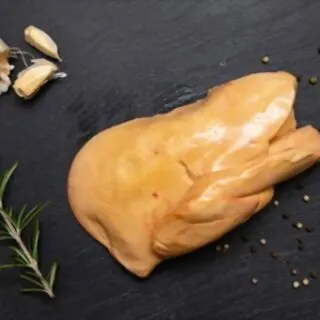
What Does Foie Gras Taste Like? A Comprehensive Guide
Ingredients
- Foie gras
- Ingredients from your selected recipes
Instructions
- Select your favorite ingredient from the range available in this article.
- Collect all the necessary items to make the recipe.
- Use the instructions provided to prepare a delicious dish in 30 minutes or less.

Carrie is a food writer and editor with more than 15 years of experience. She has worked for some of the biggest names in the food industry, including Bon Appétit, Food & Wine, and Martha Stewart Living.
As the Editor in Chief of IntroChicago.com, Carrie oversees all of the content on the site. She also manages the team of contributing writers and editors, who help to create delicious recipes, helpful tips, and informative articles that you’ll find on the site.
A native of the Chicago area, Carrie is passionate about all things food. She loves trying new restaurants and experimenting with new recipes in her kitchen. She’s also a graduate of the Culinary Institute of America, so she knows a thing or two about food!
